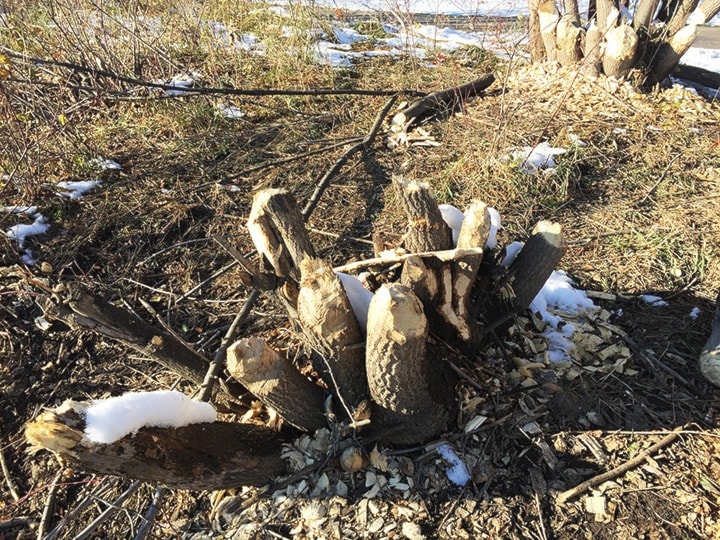Calls of an active beaver population have town planners looking at ways to mitigate the issue.
Town planners have received several calls from residents concerned about beavers on the Battle River cutting down trees along the river valley trails.
Some of these trees have been around for some years and residents report that the animals have started taking to chopping portions of the Thinking Tree on the north trail. To deal with the concerns, the town has obtained a licence from the province allowing it to trap the animals, explained Sandra Smith, communications manager.
“There is an abundant beaver population in Ponoka in the Battle River,” she explained.
In an effort to find the best option, the town researched how to handle this issue. Smith says a specialist with Alberta Environment and Parks recommended humane trapping and euthanasia as the best option.
Town staff have had to chop down several trees along the river that were already being cut up by the beavers and Smith says another recommendation was to dismantle the dams along the river. Dismantling the dams also minimizes the risk of flooding, explained Smith.
“If the river did flood they would certainly compound the problem,” she said.
“There is an engineering solution to cover the flooding but it can be quite costly.”
Relocating the beavers is not an ideal option either, said Smith. In speaking with Alberta Environment and Parks representatives, Smith said beavers can be territorial, and a relocation wouldn’t solve the issue, just move it to another spot for another municipality to deal with.
For Ponoka County the challenges are similar. Justin Babcock, county agricultural services manager, says beaver dams cause flooding concerns in two areas.
“Our mandate is to protect agricultural land from flooding and to protect road infrastructure,” said Babcock.
On county land, he will conduct trapping with a certified trapper and for private land owners, the county offers blasting services at no cost. “So that they (land owners) don’t have to bring in equipment.”
Among the concerns with the beaver dams is potential backflows of water, says Babcock. This could create flooding in fields leaving no access for equipment and livestock may get trapped in one spot.
He added that if a resident has no issue with beavers and there is no risk of damage, the county will leave the beavers alone.
“We typically go in when we’re asked to by residents or when it’s affecting our roadway,” explained Babcock.
In Alberta beavers are classified as secure — meaning they are considered not at risk — in the province’s 2010 General Status of Wild Species. Beavers are also Canada’s largest rodent.
